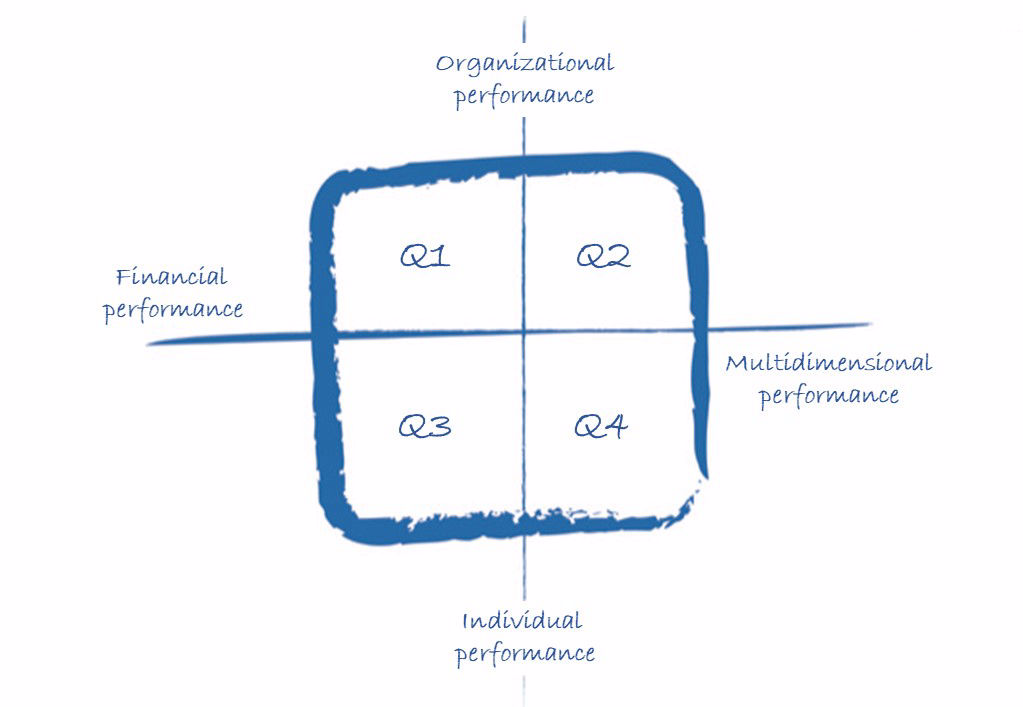Scholars’ interest to performance measurement and management (PMM) has dramatically grown in the last two decades. The development has been raging also in the practice. Today performance management practices are widespread in all industries and for all kind of organizations.
The enormous amount of research can be classified using a matrix (Cuccurullo et al., 2015), where the horizontal axis separates the PMM dimensions of measurement and the vertical one distinguishes levels of performance management.
On the left-hand side of the matrix, we locate research with a focus on the financial dimension, while on the right-hand side we find research that analyze the PMM topic in a multidimensional matter (internal processes, human resources, clients/users, etc.).
On the top of the map, we put research on the whole organization or its business units, while in the bottom we have all the research on the appraisal of individual performance.

